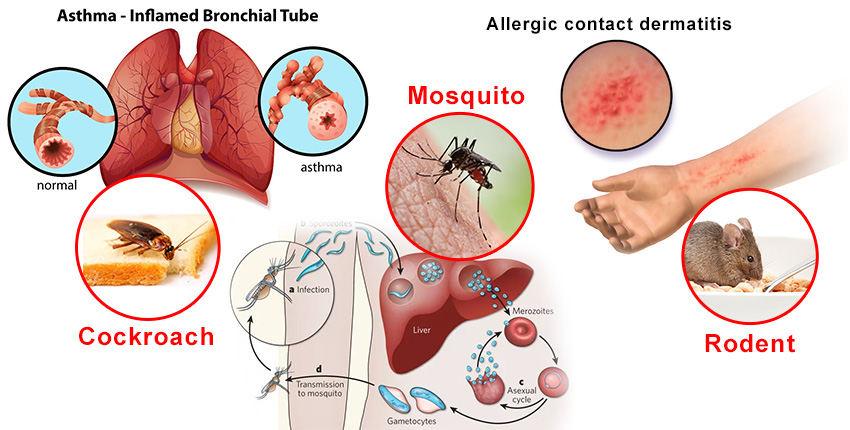The Buzz on Eco Bed Bug Exterminators Dc
The Buzz on Eco Bed Bug Exterminators Dc
Blog Article
8 Simple Techniques For Eco Bed Bug Exterminators Dc
Table of ContentsFascination About Eco Bed Bug Exterminators DcWhat Does Eco Bed Bug Exterminators Dc Do?Eco Bed Bug Exterminators Dc Fundamentals ExplainedThe Main Principles Of Eco Bed Bug Exterminators Dc Rumored Buzz on Eco Bed Bug Exterminators Dc
Since pesticides are toxic, they are additionally possibly unsafe to humans, animals, other microorganisms, and the atmosphere. Individuals that make use of pesticides or consistently come in call with them must recognize the loved one poisoning, prospective health and wellness impacts, and preventative measures to reduce direct exposure to the products they use. Hazard, or risk, of using pesticides is the possibility for injury, or the level of risk associated with utilizing a pesticide under an offered set of conditions.
Applicators can reduce or virtually remove exposure-- and therefore decrease hazard-- by complying with the label guidelines, making use of individual safety garments and devices (PPE), and managing the chemical effectively. As an example, greater than 95 percent of all chemical exposures originate from facial exposure, primarily to the hands and forearms. By putting on a pair of unlined, chemical-resistant handwear covers, this sort of direct exposure can be nearly removed.
The hazardous results that occur from a solitary direct exposure by any route of entrance are labelled "severe effects." The 4 paths of exposure are facial (skin), breathing (lungs), oral (mouth), and the eyes. Severe toxicity is identified by checking out the dermal poisoning, inhalation toxicity, and oral poisoning of examination animals.
The Basic Principles Of Eco Bed Bug Exterminators Dc
Intense poisoning is determined as the quantity or focus of a toxicant-- the a.i.-- required to eliminate 50 percent of the pets in a test populace. This measure is typically shared as the LD50 (lethal dose 50) or the LC50 (deadly focus 50). Furthermore, the LD50 and LC50 worths are based on a solitary dose and are taped in milligrams of pesticide per kilo of body weight (mg/kg) of the test pet or partially per million (ppm).
The reduced the LD50 or LC50 worth of a pesticide product, the greater its poisoning to human beings and animals. Pesticides with a high LD50 are the least hazardous to humans if utilized according to the directions on the item label. The persistent toxicity of a chemical is figured out by subjecting guinea pig to lasting direct exposure to the energetic ingredient.
The persistent toxicity of a pesticide is much more tough than intense poisoning to figure out through lab evaluation. Products are categorized on the basis of their family member acute toxicity (their LD50 or LC50 worths). Chemicals that are categorized as very hazardous (Toxicity Classification I) on the basis of either oral, facial, or inhalation toxicity must have the signal words DANGER and poisonous substance published in red with a skull and crossbones icon plainly displayed on the front panel of the package tag.
The intense (single dosage) dental LD50 for pesticide products in this team varies from a trace total up to 50 mg/kg. Exposure of a few decreases of a product taken by mouth might be deadly to a 150-pound individual. https://gravatar.com/ecobedbug3xt. Some chemical items have just the signal word risk, which informs you nothing regarding the severe toxicity, simply that the item can trigger severe eye damages or severe skin irritability
Some Of Eco Bed Bug Exterminators Dc
In this classification, the acute oral LD50 arrays from 50 to 500 mg/kg. A tsp to an ounce of this material can be fatal to a 150-pound person (bed bug treatment). Pesticide items identified as either a little harmful or relatively safe (Toxicity Categories III and IV) are needed to have the signal word CAUTION on the chemical label

All pesticide toxicity chemical, worths the LD50, can be found on the product's Material Safety Product Security InformationMSDS). Pesticide tags and MSDS can be acquired from retailers or makes - http://go.bubbl.us/e081a5/a3b1?/Established-in-2007,-Eco. The signs and symptoms of pesticide poisoning can range from a mild skin irritation to coma or even fatality.
Individuals additionally vary in their level of sensitivity to various levels of these chemicals. Some individuals may show no response to a direct exposure that might create severe ailment in others (exterminator). Since of potential health problems, pesticide customers and handlers should acknowledge the common symptoms and signs of chemical poisoning. The impacts, or signs, of chemical poisoning can be broadly defined as either topical or systemic.
Excitement About Eco Bed Bug Exterminators Dc
Dermatitis, or swelling of the skin, is approved as the most frequently reported topical effect linked with webpage pesticide exposure. Symptoms of dermatitis variety from reddening of the skin to rashes and/or sores. Some people have a tendency to cough, wheeze, or sneeze when exposed to chemical sprays. Some people respond to the solid odor and bothersome results of oil distillates used as providers in chemical items.
This sign normally subsides within a few minutes after a person is gotten rid of from the direct exposure to the irritant. Nevertheless, a reaction to a chemical item that triggers someone not only to sneeze and cough however additionally to develop extreme acute breathing signs is more likely to be a true hypersensitivity or allergic reaction.
Systemic results are rather different from topical effects. They usually happen away from the original point of contact as an outcome of the pesticide being absorbed right into and distributed throughout the body. Systemic impacts often include queasiness, vomiting, tiredness, headache, and digestive problems. In innovative poisoning instances, the individual might experience changes in heart rate, trouble breathing, convulsions, and coma, which could bring about death.
Report this page